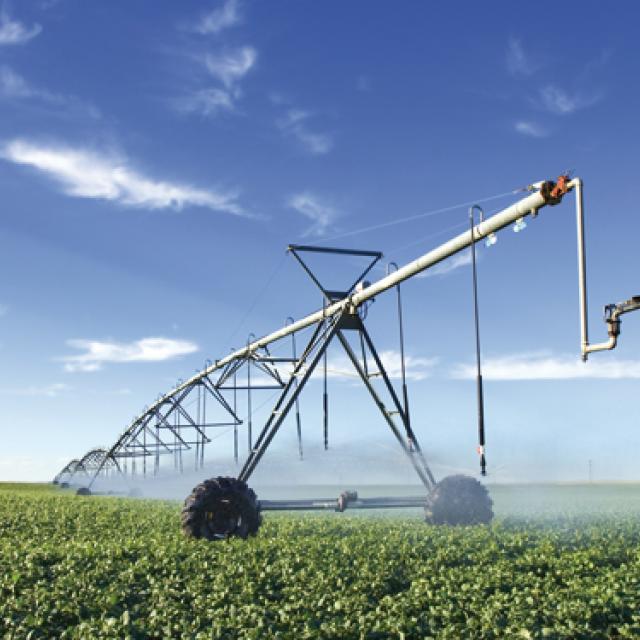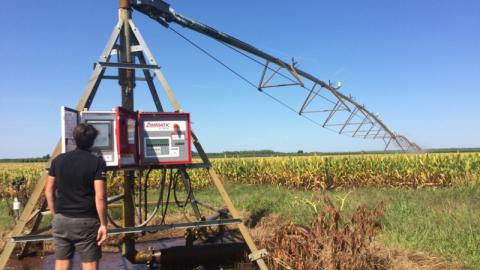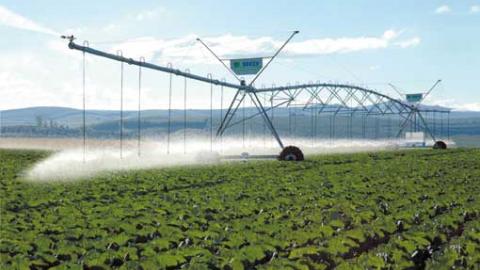The population growth expected for the next fifty years and the predicted climate change have led to an urgent reaction vis-à-vis the way agriculture will be practised in the future. Within this broad spectrum, apart from farming practices, irrigation has a crucial role to play, taking into account the climate, soil composition, quality and volume of water allotted, rotations and cropping methods.

Agriculture is essential for the survival of human life
The farming practices determine the irrigation technologies to be implemented; they can range from gravity-fed irrigation to sprinklers and the different kinds of surface and subsurface micro irrigation techniques.
Innovation in the research centres is now focused on achieving efficiency via modelling, programming, robotization, etc. But have we really looked at the methodology in detail?
Innovation in irrigation does not have to concentrate on one single aspect; it can combine different systems in a way that maximum efficiency would be achieved using the advantages of each technology while eliminating their disadvantages.
By way of an example, in certain cases sprinkler irrigation can also help to reduce the temperature during hot periods and create a humid environment, which can also be of benefit to certain plantations, but at other times they could be costly in terms of the volume of water applied and have their efficiency adversely affected by periods of strong wind, etc.
Within the context of the volumes of water used by the farmers, the research centres are working on the efficiency of the irrigation systems, via improvements in the equipment and the automatic control of these devices.
As far as their uses are concerned, the advantages and disadvantages of the different irrigation systems have to be taken into account.
With more than 25 years’ experience in this field and in constant contact with the farmers, the manufacturers of irrigation equipment, while developing different activities and projects related to localised irrigation (subsurface drip irrigation), bring a different perspective to the current irrigation methods employed and they are rethinking a new approach for their implementation.
In contrast, one of these new methodologies consists of combining these irrigation systems, notably subsurface drip irrigation with sprinkling or micro sprinkling, so as to provide the user with the option, at a given time, of having the most suitable irrigation system available for the plant and the environment.
By way of an example, for either a crop of strawberries, where the need to freshen up the strawberry plants is paramount, or for seed corn (maize), where the pollination period is critical during very hot weather, strong winds or other events, the possibility of changing from one system to another can provide solutions for safeguarding the yields.
This possibility of changing from one system to another without the need for any complicated handling procedures, is a method and a technique that can be considered across the whole country.
Being able to combine these irrigation techniques saves the farmer time, especially in the case of large surface areas, which are not necessarily straight and are difficult to access, where the sprinkler gun has to be moved constantly and the sprinkler heads and risers have to be rotated, often under windy conditions.
In order to study and fine-tune this new technique, a partnership could be considered with the companies that manufacture and distribute the irrigation systems, with the collaboration of the farmers, the main players who provide indisputable testimony of the results obtained. However, it is true that it will involve extra investment for the farmer, which would be a hindrance if there is not sufficient information available concerning the advantages of this practice.
This technique is not used at the present time.
So, everything remains to be done.
How can we combine the systems in such a way that they can be easily operated?
Other technologies are being tested in the world of field crops, market gardening and fruit tree growing:
- combining drip irrigation with sprinkler nozzles and with pivot irrigation
- combing hose reels with drip irrigation in market gardening
- irrigation via the hooping or looping of subsurface drip tubes for fruit tree growing.
The commercial irrigation sector should investigate these possibilities as part of their R&D programme in order to prepare for the future.


